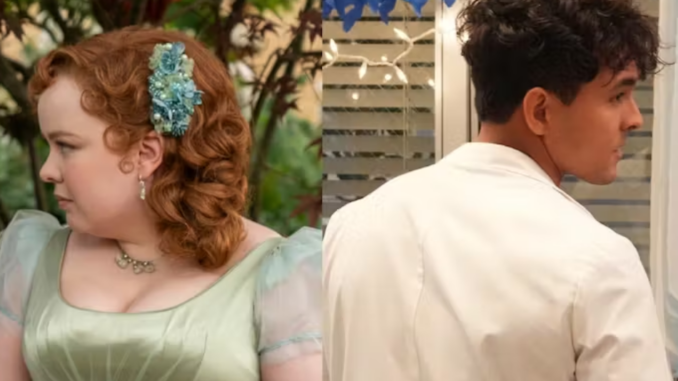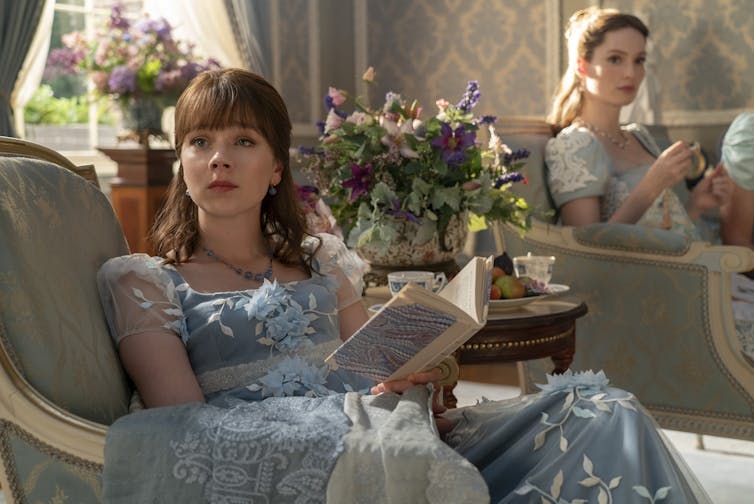
From Bridgerton to Grey’s Anatomy, Shonda Rhimes Is the Queen of Romance. Here’s How She Makes Our Hearts Go Pounding
TV producer and writer Shonda Rhimes has come a long way since becoming a writer on Crossroads in 2002.
Her production company Shondaland has now made a name for itself in delivering romantic shows, with Bridgerton (on which she is an executive producer) a recent smash hit. With season three debuting on Netflix tomorrow, it wouldn’t be surprising if Shondaland had another surefire hit.
Rhymes understands romance as a technical art form. But beyond that, she shows us that love doesn’t always have to exist between two people; it also exists between people and their passions, and in how they see themselves.
The Art of Romance
First airing in 2005, Rhimes’s debut series Grey’s Anatomy (which is still in production today) leans heavily on elements of romantic soap operas and dramas.

Rhimes masterfully executes romance in a limited setting – whether it’s a hospital, a social season in Regency-era London, a fire station in Seattle, or the political landscape of Washington DC.
She also maintains one of the most important characteristics of soap operas: there’s no end in sight. We’ve been following Meredith Grey’s love life since her fateful first encounter with McDreamy, even dropping in to catch up on her and Nick.
In Bridgerton, audiences have been waiting with bated breath for Colin and Penelope to get together. Will their relationship reach its climax in season three? Rhimes’ ability to effectively navigate such storylines is what keeps us coming back.
Bridgerton’s spin-off Queen Charlotte also carries the show’s plot in a way that frames it as if it has no end and no fixed beginning.
Marrying a Foreign Familiar
The romance genre is often classified into two categories: romantic dramas or romantic comedies.
Unfortunately, both can be considered “ladylike” and largely trivial by audiences and critics. However, the main characteristics of the romance genre give audiences the same sense of connection as any other popular genre.
Romance tends to follow a “main plot” in the story. This predictable structure mimics the natural milestones of a relationship: meeting someone, falling in love, and living happily ever after.
But the story can also include a range of difficulties, such as love triangles, unrequited love, or forbidden love. The obstacles tend to cover a range that viewers will likely identify with at least one of them.
This balance of predictability and conflict allows viewers to escape into an exciting fantasy world, while knowing that things will end well
In any Shondaland series, there are multiple major storylines running concurrently. These storylines often take place at different points and are interspersed throughout the season (or seasons).
Bridgerton’s period setting helps to intensify the suffering the characters face. It adds to the escapism, while also depicting all-too-familiar relationship issues.
Music is key
One way to get viewers into the minds of the characters is through the use of music, and Rhimes does this expertly.
Incorporating a recognizable piece of music can add layers to an already emotional scene. An example from Rhimes’ early years is the use of Chasing Cars by Snow Patrol in the second season finale of Grey’s Anatomy.
The track’s alternating notes create auditory tension, reflecting the visual juxtaposition of formal/frivolous attire with the coolness of the hospital.
Izzy’s confession affirms her love for Denny but also ruins her career. The questionable lyric, “would you lie to me?”, is heard as Meredith decides between two suitors. These visual and auditory cues reinforce an already written emotional narrative.
Five years later, Rhimes referenced this scene again on the show as Dr. Callie Torres fights for her life (and her unborn child’s).
During the out-of-body experience, Callie sings the lyrics to Chasing Cars and her co-workers join in. This time, however, the focus is on the lyrics as they convey the characters’ heightened emotional states.
